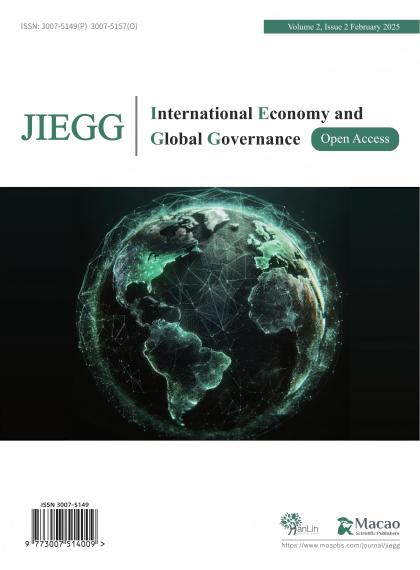-
China Daily. (2024). Resolution of the Central Committee of the Communist Party of China on Further Deepening Reform Comprehensively to Advance Chinese Modernization. https://www.chinadaily.com.cn/a/202407/22/WS669db327a31095c51c50f2f8.html
-
Ao, L. J., Tang, C., & Wang, W. J. (2025). Research on the source system of American science and technology policy toward China based on multi-streams theory. Journal of Intelligence, 44(1), 88–94,87.
-
Xu, F., & Shi, B. (2024). Techno-nationalism and its influence on U. S. technology policy towards China. Contemporary American Review, (2), 60–81,127–128.
-
Han, Z. Y., & Wang, Y. H. (2023). An analysis of the domestic political logic of the United States' policy towards China. Quarterly Journal of International Politics, 8(2), 1–25.
-
Bulman, D. J. (2021). The economic security dilemma in US-China relations. Asian Perspective, 45(1), 49-73.
-
Goldstein, A. (2013). First things first: The pressing danger of crisis instability in US-China relations. International Security, 37(4), 49-89.
-
Liff, A. P., & Ikenberry, G. J. (2014). Racing toward tragedy?: China's rise, military competition in the Asia Pacific, and the security dilemma. International Security, 39(2), 52-91.
-
Mearsheimer, J. J. (2001). The Tragedy of Great Power Politics. New York: W. W. Norton & Company.
-
Yan, X. T. (2021). The competition between China and the United States in the early Digital Age. Quarterly Journalof International Politics, 6(1), 24–55.
-
Christensen, T. J. (2015). The China challenge: Shaping the choices of a rising power. New York: WW Norton & Company.
-
Wu, X. B. (2022). How the changing U.S. domestic political ecology is reshaping its China policy. The Chinese Journal of American Studies, 36(4), 30–46.
-
Wang, H. (2018). The dual logic of the Trump Administration's strategic adjustment towards China and its interaction. World Economics and Politics, (3), 47–69,156–157.
-
Yuan, Z. (2000). Interest group politics and the United States' policy towards China. Journal of Contemporary Asia-Pacific Studies, (6), 8–14.
-
Han, Z. Y. (2001). Public diplomacy: An important tool of American foreign policy. Nankai Journal (Philosophy Literature and Social Science Edition), (6), 89–96.
-
Wang, H., & Song, T. Y. (2023). Integrating the dual logics of domestic and foreign affairs-the Biden administration's national Supply Chain security strategy in the context of Sino-US competition. The Chinese Journal of American Studies, 37(1), 82–112.
-
Evans, P. B. (1993). Building an integrative approach to international and domestic politics. Double Edged Diplomacy. International Bargaining and Domestic Politics, 397-430.
-
Xu, Z. W., & Wu, Y. Z. (2022). A two-tier game analysis of the United States' soybean trade with China. Economic Relations and Trade, (12), 16–23.
-
Xue, Z. W., Sun, Y., & Guo, L. Q. (2023). New changes in the US Taiwan strait policy from a two-tier game perspective: A study of the biden administration. Cross-Taiwan Strait Studies, (4), 94–106.
-
Yang, L. Z., Luo, S. S., Wu, F., & Liu, X. (2022). Analysis of the trend and response strategies of Sino-US economic and trade frictions from the perspective of two-layer game theory. Journal of Chongqing Technology and Business University (Social Sciences Edition), 39(3), 136–148.
-
Kong, Q. F., & Li, A. (2020). The United States' trade war against China from the perspective of the two-tier game. Issues of Contemporary World Socialism, (3), 147–157.
-
Trubowitz, P. (1998). Defining the national interest: conflict and change in American foreign policy. Chicago: University of Chicago Press.
-
Kupchan, C. A., & Trubowitz, P. L. (2007). Dead center: The demise of liberal internationalism in the United States. International Security, 32(2), 7-44.
-
Wang, H. (2016). The logic of social alliances and the evolution of the United States' foreign strategy (1945-2015). World Economics and Politics, (7), 58–88.
-
National Bureau of Statistics of the People's Republic of China. (2025, April 09). How are high-tech industries defined and statistically analyzed. https://www.stats.gov.cn/zs/tjws/tjbz/202301/t20230101_1903766.html
-
Wang, S., & Li, Y. (2023). System pressure, domestic politics and the conservatism of South Korea's foreign policy: An interpretation based on neoclassical realism. Northeast Asia Forum, 32(5), 65–83,127–128.
-
Feng, W. (2024). Not all domestic variables are mediating variables: Distinguishing between mediating and moderating variables in neoclassical realism. World Economics and Politics, (10), 109–137,163.
-
Foulon, M. (2017). Neoclassical realist analyses of foreign policy. In Oxford Research Encyclopedia of Politics.
-
Ripsman, N. M., Taliaferro, J. W., Lobell, S. E., & Yesilyurt, N. (2017). Neoclassical Realist Theory of International Politics. Uluslararasi Iliskiler/International Relations, 14(55), 119-125.
-
Tang, X. H. (2021). Power and strategy in the era of technological politics. Quarterly Journal of International Politics, 6(2), 59–89.
-
Stat, OECD. (2016). Main science and technology indicators (MSTI database). Retrieved May 6, 2025, from https://data-explorer.oecd.org/vis?lc=en&df[ds]=dsDisseminateFinalDMZ&df[id]=DSD_MSTI%40DF_MSTI&df[ag]=OECD.STI.STP&dq=.A.G%2BT_RS...&lom=LASTNPERIODS&lo=5&to[TIME_PERIOD]=false.
-
World Intellectual Property Organization. (n.d.). Home page. World Intellectual Property Organization. Retrieved May 6, 2025, from https://www.wipo.int/portal/en/index.html.
-
Open Secrets. (2025). Original Reporting. Retrieved May 6, 2025, from https://www.opensecrets.org/.
-
Long, C. S., & Yuan, Z. (2023). Analysis of the United States' science and technology strategy towards China in the era of great power competition. The Chinese Journal of American Studies, 37(4), 47–72.
-
Xia, M., & An, Y. N. (2020). Impact from high-tech internet companies on American domestic politics and foreign economic policies. The Journal of Jiangsu Administration Institute, (2), 94–102.
-
Wikipedia contributors. (n.d.). Ashkan Soltani. Wikipedia. Retrieved May 6, 2025, from https://en.wikipedia.org/wiki/Ashkan_Soltani.
-
Office of Government Ethics. (n.d.). Home page. Office of Government Ethics. Retrieved May 6, 2025, from https://www.oge.gov/.
-
The White House. (n.d.). Official website of the White House. Retrieved May 6, 2025, from https://www.whitehouse.gov/.
-
Library of Congress. (n.d.). Congress.gov. Retrieved May 6, 2025, from https://www.congress.gov/.
-
Statista GmbH. (n.d.). Statista - The Statistics Portal. [Website]. Retrieved May 6, 2025, from https://www.statista.com/.
-
HG Insights. (n.d.). Google Cloud Market Share & Buyer Landscape in 2024. HG Insights. Retrieved May 6, 2025, from https://hginsights.com/blog/google-cloud-market-share-report.
-
China Strategy Group. (2020). Asymmetric Competition: A Strategy for China & Technology.
-
Center for Strategic and International Studies. (n.d.). CSIS Home Page. Retrieved May 6, 2025, from https://www.csis.org/.
-
Zhai, M. Y., & Li, Q. S. (2020). Analysis of the trump administration's science and technology prevention policy towards China. Research on International Relations, (4), 129–150.
-
199IT. (2020, August 14). Annual report of Huawei investment & Holding Co., Ltd. for 2019. http://www.199it.com/archives/1100833.html#google_vignette.
-
Boston Consulting Group. (2020, September 16). Government Incentives and US Competitiveness in Semiconductor Manufacturing. Boston Consulting Group. Retrieved May 6, 2025, from https://www.bcg.com/publications/2020/incentives-and-competitiveness-in-semiconductor-manufacturing.
-
U.S. (2019, June 17).chipmakers quietly lobby to ease Huawei ban. https://www.reuters.com/article/us-huawei-tech-usa-lobbying-idUSKCN1TH0VA.
-
Liao, Q. (2023, July 19). Biden is brewing new restrictions, and the Big three chips are lobbying the US government to “stop”. http://intl.ce.cn/sjjj/qy/202307/19/t20230719_38637184.shtml
-
United States Congress. (2022, August 9). CHIPS and Science Act, Public Law 117 - 167, 117th Cong., 2nd sess., Division A and Division B.
-
Semiconductor Industry Association. (n.d.). Semiconductor Industry Association | SIA | Voice of the Semiconductor Industry. Retrieved May 6, 2025, from https://www.semiconductors.org/.
-
GMA News. (2019, March 1) Despite U.S. Warning, Lorenzana Sees No Reason to Be Wary of China’s Huawei. Retrieved May 6, 2025, from https://www.gmanetwork.com/news/news/nation/686618/despite-us-warning-lorenzana-seesno-reason-to-be-wary-of-china-s-huawei/story/.
-
Prashanth Parameswaran. (2019, June 25) Southeast Asia’s Huawei Response in the Spotlight with First 5G Rollout,”The Diplomat, Retrieved May 6, 2025, from https://thediplomat.com/2019/06/southeast-asias-huawei-responsein-the-spotlight-with-first-5g-rollout/.
-
Wang, X. W., & Ma, M. J. (2022). The US digital competition strategy towards China: Driving factors, implementation paths and impact limits. International Forum, 24(1), 78–97,158–159.
-
Huawei. (2020, July 19). Rain and Huawei Jointly Launches Africa’s First Standalone 5G Network. Retrieved May 6, 2025, from https://www.huawei.com/en/news/2020/7/rain-huawei-africa-first-standalone-5g-network.
-
Lu, D. X. (2021, February 26). 5G cooperation between China and Latin America holds great promise. http://world.people.com.cn/n1/2021/0126/c1002-32011918.html
-
National Bureau of Statistics. (2024, September 18). Innovation-driven development has achieved remarkable results, and the construction of a science and technology power has been vigorously advanced-The twelfth report of the series on the economic and social development achievements of new China over the past 75 years. https://www.stats.gov.cn/sj/sjjd/202409/t20240918_1956553.html
-
The Central People's Government of the People's Republic of China. (2024,February 18). Opinions on promoting the innovative development of future industries by seven departments including the ministry of industry and information technology. https://www.gov.cn/zhengce/zhengceku/202401/content_6929021.htm
-
Qstheory. (2024, July 26). Improve the mechanism for independently cultivating talents to foster a high-level innovative talent team. http://www.qstheory.cn/qshyjx/2024-07/26/c_1130185712.htm
-
Sun, J. (2023). The institutional evolution and practical effects of anti-monopoly in the United States. People's Tribune, (19), 76–80

